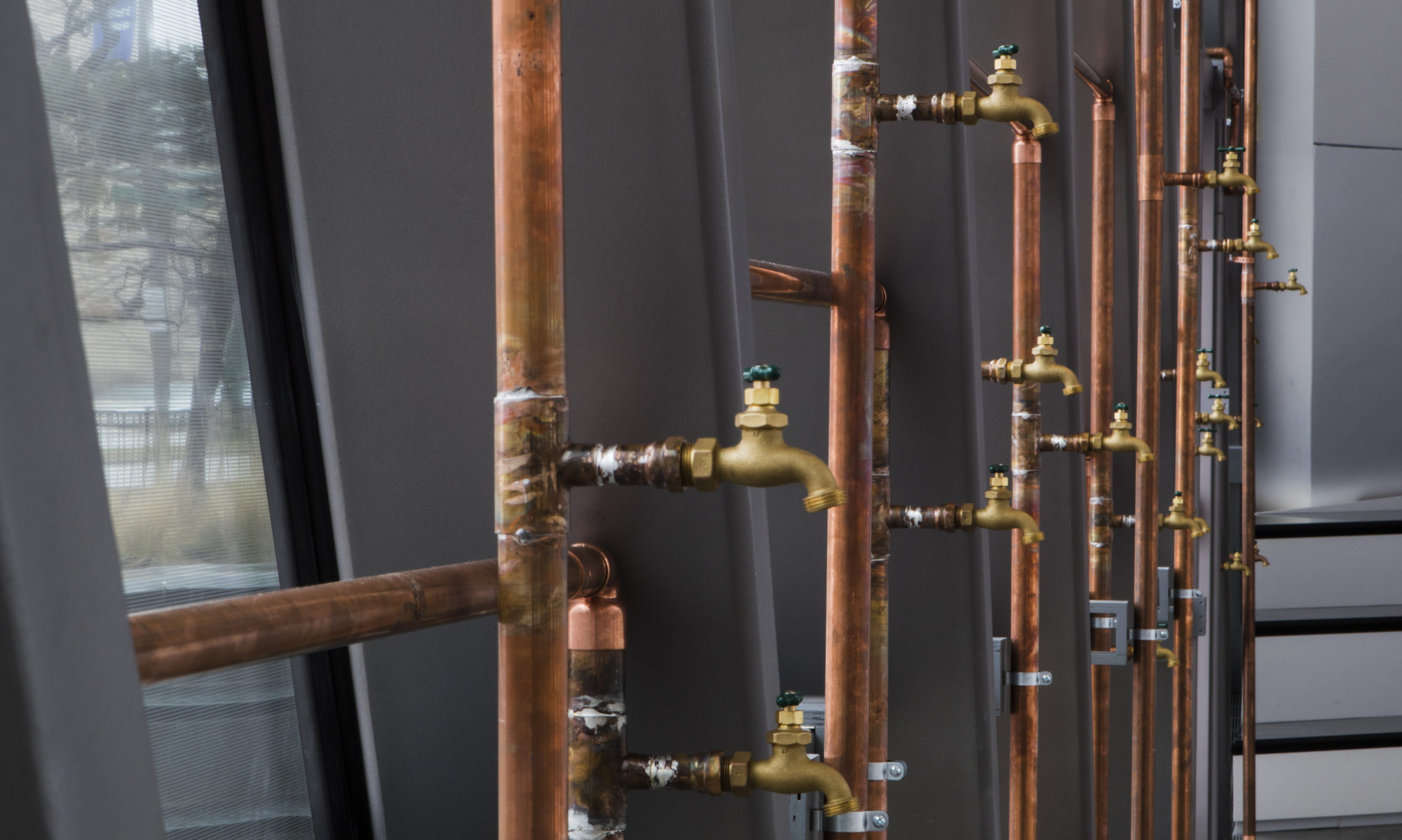The installation of Beyond Streaming: Sound Mural for Flint occupied the Alan and Rebecca Ross Education Wing of the Eli and Edythe Broad Art Museum, and was composed of thirty listening stations fashioned out of copper pipes, running from the floor to the ceiling. Each pipe had a spigot attached to its lower section, at varying heights but accessible to most visitors. The installation was site-specific in the sense that it was designed to attach to and rest upon the architecture of the two bays of windows in the Education Wing—which are part of the building design as conceived by the late, master architect Zaha Hadid. In response to the architecture, the installation followed a specific logic that requires each length of pipe to turn at a right angle where it meets the building’s structure, thereby creating a second grid that is woven over the preexisting irregular grid.
In total, the installation was composed of approximately 1,460 feet of copper piping and 530 copper fittings. All of the copper piping and fittings were on loan from MSU’s Department of Infrastructure Planning and Facilities, and were recycled by the university after the exhibition closed, to be used to upkeep the plumbing of the many university buildings and facilities. The use of copper pipes and spigots was purposeful for a number of reasons, not least of which in recognition that they are familiar materials that reference the water transport systems used by municipal entities and households alike. Further, copper is a metal that is found naturally in the State of Michigan, and the history of the State is very much connected to the history of copper mining. The Upper Peninsula of Michigan was once the leading provider of copper to world markets, and work in the mines attracted people from across the globe to work and live in the UP.
How the installation worked: within each pipe was located a different digital audio track made by the pairs of students—one from Carman-Ainsworth High School in Flint and one from Everett High School in Lansing. The audio tracks are composed of field recordings made by the students during the workshops facilitated by artist Jan Tichy, mixed with recordings of texts performed by the students in response to the Flint water crisis. To access the audio, visitors to the Education Wing were able to interact with the copper pipes by opening and closing the spigot valves. When the valve is closed, the installation remains silent. When the valve is opened, the audio recording within pours out. To further accentuate the recordings, the pipes grow in diameter as they descend from the ceiling to the floor, thus allowing the sound waves to grow and amplify. Along with the listening stations dedicated to the students’ voice, there was also one station created by the pairing of the two teachers involved in the project—Jessyca Mathews and Pam Collins—who co-lead the workshops and facilitated the student interactions.































